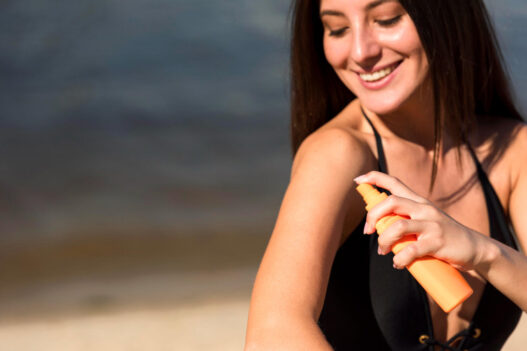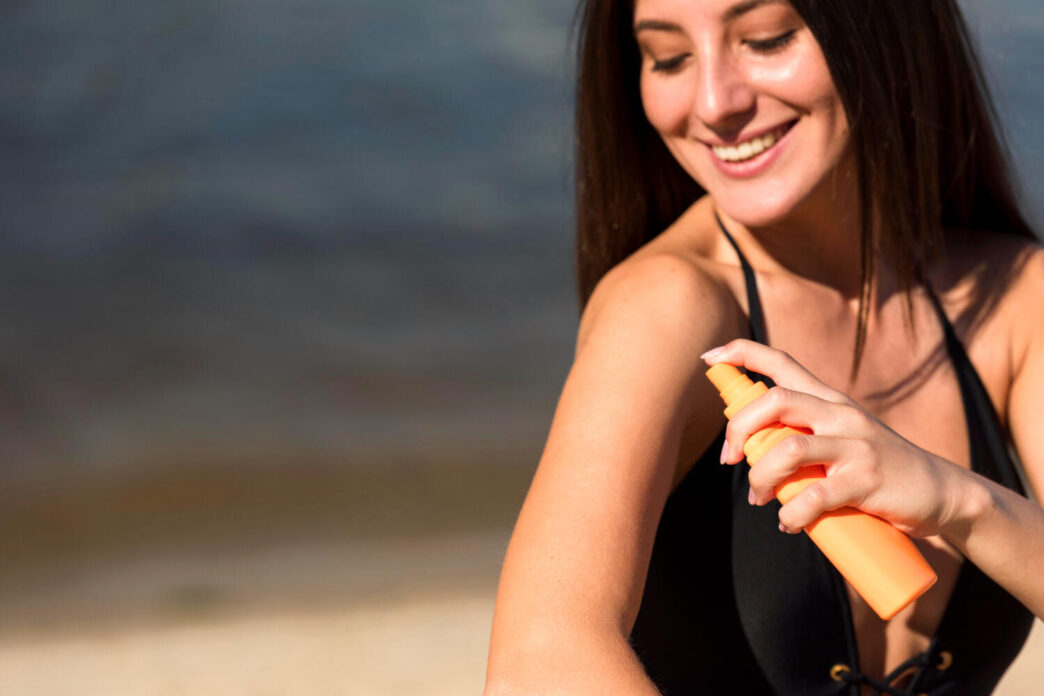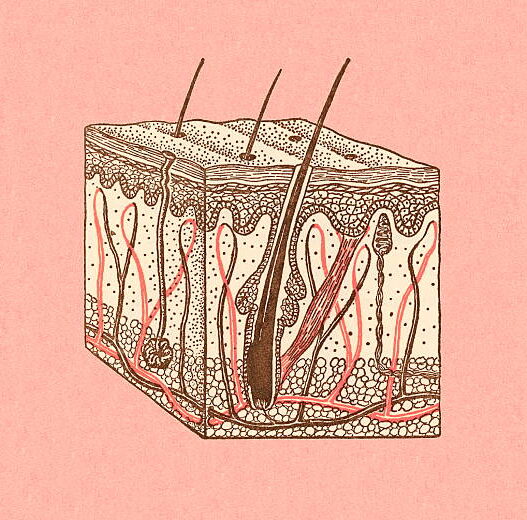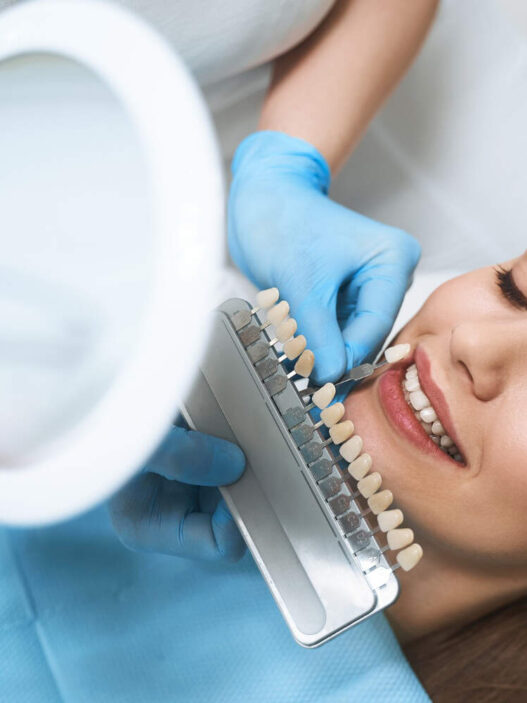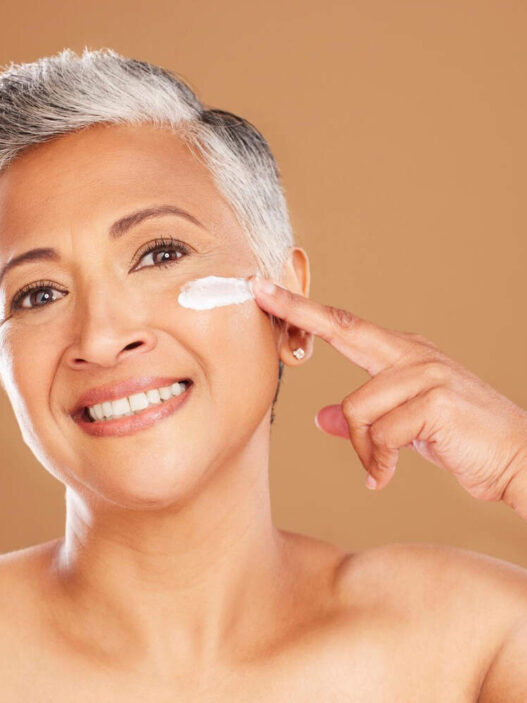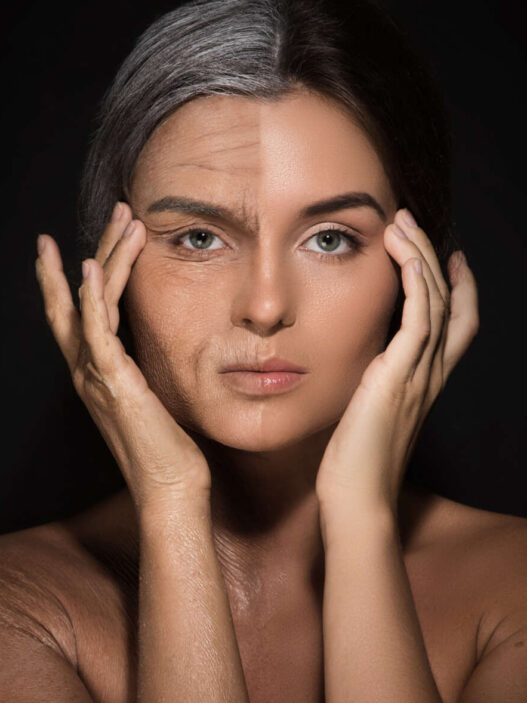Here are the strategies for protection from the sun by a board-certified dermatologist Dr. Mara Dacso including selecting a good tinted sunscreen such as Alastin Hydratint, Elta MD Tinted sunscreen, and several other recommendations and adding vitamin C to your anti-aging regime.
Skin Cancer – Can sunscreen protect us?
Skin cancer is the most common cancer in the United States. Even more alarming, one in five Americans will develop skin cancer in their lifetime.
As a busy board-certified dermatologist in North Texas where skin cancer is extremely common, I hear one of the most common questions in my clinic: “which sunscreen should I use for myself and my family?”. The good news is that we have come a long way in terms of formulating sunscreens that are easy to apply and feel good on our skin.
Which Sunscreen To Use?
We know that ultraviolet (UV) radiation from the sun and from tanning beds leads to skin cancer and sun damage, but did you know that blue light from our devices and screens, visible light, and infrared radiation also contribute?
Especially for my patients who struggle with pigmentation issues (such as melasma and hyperpigmentation), it is crucial to use a medical-grade sunscreen daily and in conjunction with any prescribed treatments.
For all patients, regardless of age, skin type, or gender, I recommend a daily broad-spectrum sunscreen with a sun protection factor (SPF) of 30 applied 365 days per year, rain or shine.
Tinted Sunscreens – Alastin Hydratint OR Elta MD Tinted Sunscreen?
In my opinion, tinted sunscreens containing only minerals (zinc, titanium dioxide, and iron oxide) such as Alastin hydratint, and Elta MD tinted sunscreen that physically block UV radiation are superior to chemical sunscreens that absorb UV radiation.
Many patients are concerned about data showing the chemicals in sunscreens are absorbed into our bodies and damage coral reefs. Sunscreens containing only mineral blockers are not only safe but also, are less likely to be irritating to sensitive skin.
How often to apply sunscreen?
Sunscreen should also be reapplied every 60-80 minutes while outside or after swimming and/or sweating to be effective. In addition to reapplying sunscreen, I am a major advocate for wearing your sun protection as clothing.
There are now tons of stylish sun protective clothing options, sunglasses, wide-brimmed hats, and swimsuits for all ages that make it easy to stay protected while enjoying outdoor activities.

Look for an ultraviolet protection factor (UPF) number on the label so you know you are getting adequate protection.
Sunscreen for Children
Children should especially be protected from the sun, since severe sunburns in childhood and teenage years may increase the risk of skin cancers, including melanoma.
Start your kids off at a young age wearing sunscreen and UPF swim shirts so it becomes second nature as they get older and never feels like a “chore”. If you are going to be spending a lot of time outdoors, try to avoid the hours of peak sun from 10 am to 4 pm, seek shade whenever possible, and don’t forget to reapply sunscreen often.
Supplement for Sun Protection
Another way to add a layer of UV protection from the inside out is by starting a supplement containing Polypodium leucotomus extract. Especially for my patients who are more likely to get sunburns and are at a higher risk for skin cancers, this has been shown to be a safe and effective way to reduce the damaging effects of ultraviolet radiation. My favorite over-the-counter options are Heliocare® and SunISDIN™
How do you choose a good sunscreen from the thousands of options on the market?
My recommendation is to choose something that you’ll commit to using!
Sunscreens come in a variety of vehicles that fit all lifestyles, including creams, lotions, sprays, sticks, and powders.
Currently, I’m really loving the Alastin Hydratint SPF 36.
Other than Alastin Hydratint, Elta MD tinted sunscreen, Elta MD UV Elements SPF 44, and La Roche Posay Anthelios Mineral 50 are great options.
For those who prefer non-tinted sunscreen, ISDIN Eryfotona Actinica is excellent.
For the kids, I love Elta MD tinted sunscreen Elta MD UV Pure SPF 47 as well as Baby Bum Mineral 50 lotion and stick.
Reapplying sunscreen is one of the most challenging habits to create, but Colorescience and ISDIN have made it easy with their tinted mineral-based powder sunscreens Colorescience Sunforgettable® Total Protection Brush-on Shield SPF 50 and ISDIN Mineral Brush Powder. You can easily throw these in your bag to apply throughout the day. Set the alarm on your phone to reapply every 2 hours while out.
Is the SPF of your makeup enough to protect you?
A common question I get from my patients who wear makeup is: “Is the SPF in my makeup enough?”. The short answer is no. I always recommend applying sunscreen in addition to makeup, since the SPF in makeup is typically too low to offer adequate UV protection.
There are so many tinted mineral sunscreens like Elta MD that I recommend that are cosmetically elegant and blend very well into the skin. That extra layer of protection is worth one additional step in your morning routine.

What else can you do to help protect your skin from UV?
Adding vitamin C to your anti-aging regimen is a great option. Vitamin C acts as an antioxidant to reduce the damaging effects of UV, and when applied under your sunscreen, it acts as another layer of protection.
I recommend using at least a 10% vitamin C, one with ferulic acid, or hexadecyl ascorbic acid. My favorites are the Revision C+ 30%, Skinceuticals CE Ferrulic, and La Roche Posay 10% Vitamin C. Not only will you get the added UV protection, but these products can also address pigmentation issues and fine lines.
Bottom line?
Sun protection should be second nature, and I always recommend using strategies that easily fit into your family’s lifestyle.

Dr. Mara Dacso is a board-certified dermatologist practicing general and cosmetic dermatology in Plano, Texas at Innovative Dermatology. She specializes in medical as well as cosmetic dermatology with advanced training in dermatopathology (pathology of the skin). Dr. Dacso advocates for her patients and supports her specialty through local and national leadership positions. She has been consistently recognized by her peers as a D Magazine “Top Doctor” as well as a Texas Monthly “Super Doctor”. She is passionate about providing exceptional patient care and proudly offers comprehensive aesthetic, medical and surgical treatments.
